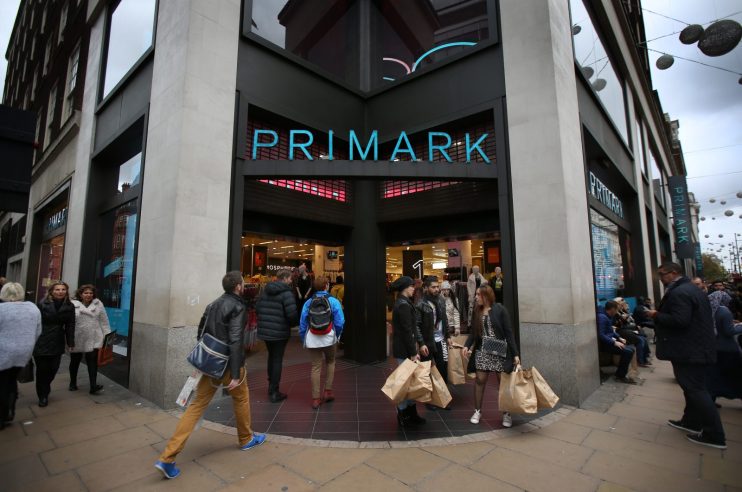Primark owner takes £1bn extra inflation hit amid ‘most challenging’ economy for many years

Primark owner Associated British Foods (ABF) saw inflationary costs leap by £1bn this year alone, as it weathers “highly volatile” economic conditions and hopes to retain shoppers with its low prices.
The chairman of the fashion and food business, Michael McLintock, said ABF had “encountered the most challenging economic conditions for many years with sharply rising and broadly based inflation,” plus “highly volatile” input costs and exchange rates.
However, the London listed firm posted stronger full-year revenue and profit compared to last year, benefitting from the easing of Covid lockdown measures.
High street staple Primark said it would hold price hikes for the new financial year at previously implemented rates, as opposed to further hiking prices to swallow headwinds.
However, City analysts warned that while this approach would do well to not alienate customers, it would result in tighter margins and lower profits in the new financial year.
Primark’s adjusted operating profit margin for next year was anticipated to be lower than eight per cent.
Earnings were forecast to remain below pre-Covid levels until the 2024 financial year as ABF is “determined to retain Primark’s reputation for value as consumers become more cost-conscious,” City Index market analyst Joshua Warner said.
The affordable apparel seller will be hoping to benefit from shoppers trading downwards this winter, as households face inflation levels of above 10 per cent amid bill increases across groceries and energy.
On Tuesday, ABF shared an adjusted operating profit of £1.3bn, as shoppers flocked back to high street stores in the year to mid-September.
Primark’s total sales toppled £7.7bn, around 43 per cent ahead of last year, after the chain’s brick-and-mortar estate had been hit hard in Covid.
However, trading in Continental Europe remained below pre-pandemic levels, with consumer confidence “generally weaker.”
Primark’s owner pointed to “exceptionally hot summer months” as slowing down trade, with colder weather helping to boost sales in many markets.
Sales growth at Primark was anticipated to be driven by already planned price hikes on clothes and accessories, in addition to an expansion of retail space.
ABF warned of “significant” input cost inflation down the line, citing elevated costs for raw materials, energy and labour rates.
It was also facing higher purchasing costs after the strengthening of the US dollar against sterling and the euro.
In a more optimistic conclusion, the retailer said it hoped to return to an adjusted operating profit margin of some 10 per cent as commodity prices moderate and consumer confidence recovers.
After being wounded in the pandemic due to a lack of an e-commerce presence, the fashion retailer has since revamped its digital platform, launching a new UK website and a click and collect trial which will debut in 25 stores.
The growth of Primark’s digital capacity would be “a key element in the future development,” of the fashion chain, ABF chief executive George Weston, said.
After already hiking prices this year, Primark keeping prices steady was “an integral part of the group’s ability to keep customers coming through the doors,” according to Sophie Lund-Yates, equity analyst at Hargreaves Lansdown.
“Without being the affordable name on the high street, Primark loses almost all its bargaining power,” she added.
Shares in the group were up five per cent in early trading on Tuesday morning.